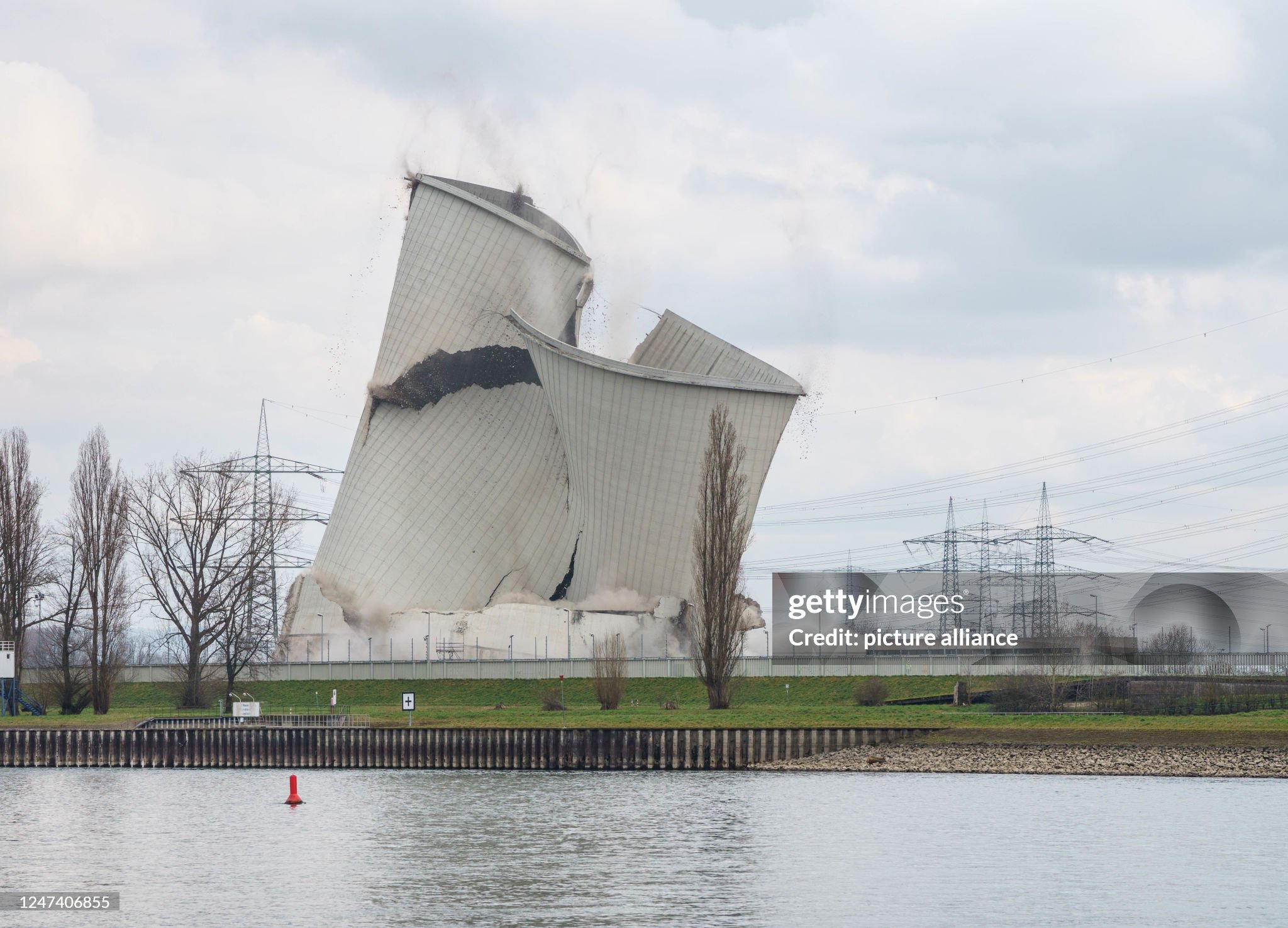 The second of four cooling towers at Germany’s Biblis NPP in southern Hesse. As with the first tower three weeks before, a pneumatic excavator from a special company worked on the last support pillars to destabilise the tower and eventually bring it down.
The second of four cooling towers at Germany’s Biblis NPP in southern Hesse. As with the first tower three weeks before, a pneumatic excavator from a special company worked on the last support pillars to destabilise the tower and eventually bring it down.
"It fell beautifully. Everything worked as planned," said RWE spokesman Alexander Scholl. Within seconds, the tower was reduced to rubble.
The two-unit Biblis plant (A&B), each with two cooling towers, was shut down in March 2011 in response to the Fukushima Daiichi accident. It has been undergoing demolition since 2017. The two pressurised water reactors began operation in 1974 and 1976. The two reactors were among the eight units Germany ordered to be closed after Fukushima. Biblis A&B are pressurised water reactors rated at 1,167 MWe and 1,240 MWe, respectively. They had been licensed to operate until 2019 and 2021 just two months before the shutdown order.
RWE said approximately 15,000 tonnes of conventional construction waste will be produced for each tower. RWE added that the quality of the concrete means most of the material can be recycled as a substitute for gravel in concrete production or as an aggregate in the cement industry.
The operation to dismantle the two reactors is expected to take about 15 years. There are 108 Castor containers with used fuel stores at the onsite interim storage facility, which is licensed to operate until 2046. As yet Germany has no final disposal facility but plans are underway.
Image: The second cooling tower at the Biblis nuclear power plant is destabilised and demolished (courtesy of RWE)






